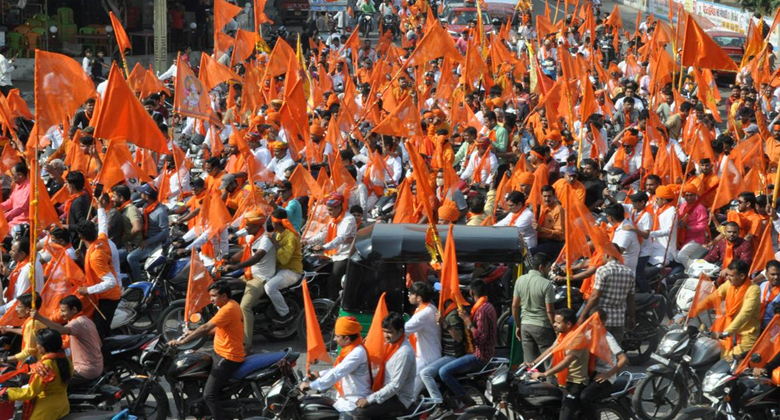Hindu-Muslim Strife and The Distressing Communal Political Dynamics in West Bengal
Janet Levy - 23rd July 2024

The situation in West Bengal, India, offers a compelling perspective on the dynamics between religious communities, particularly the Hindu-Muslim strife, driven by historical complexities and contemporary challenges.
Bengal’s Historical Context:
- Bengal’s history is rich and multifaceted, having been a powerful kingdom ruled by Hindu kings while also experiencing significant Muslim influence over centuries.
- In the early 13th century, Turkic Muslim general Muhammad Bakhtiyar Khilji invaded Bengal, annexing large parts of the region to the Delhi Sultanate, marking the beginning of Islamization in Bengal.
- Over time, many Bengalis adopted Islam, fostering a syncretic culture where Muslims and Hindus coexisted and jointly organized festivals.
In this context, Dr. Peter Hammond, a Christian missionary and author, warns of unwelcome changes like riots, restrictions on speech and religion, and the takeover of politics and law enforcement as the Muslim population increases. His book, Slavery, Terrorism and Islam, outlines how these societal changes occur due to a 1,400-year-old doctrine of immigration based on Mohammed’s migration from Mecca to Medina. Under this religious edict, or Hijra, Islamic expansionism and submission of all non-Muslims to shariah must occur.
Hammond argues that as the Muslim percentage of the population grows, demands for special status and privileges within the host country increase. This can lead to Muslim control of political processes, law enforcement, media, and the economy, as well as restrictions on freedom of movement, speech, and religious practices. The appropriation of goods and property, and violence with impunity, can also occur. The situation in West Bengal, bordering Muslim-majority Bangladesh, illustrates these inherent problems for non-Muslim societies with a growing Muslim population.
Historical Division: In 1947, the partitioning of British India resulted in the division of Bengal into two distinct regions: the predominantly Hindu West Bengal, a state in India, and the predominantly Muslim East Bengal, which initially became a province of Pakistan. In 1971, East Bengal evolved into the independent, Muslim-majority country of Bangladesh.
Demographic Shifts: At the time of partition, West Bengal had a Muslim population of 12%, while East Bengal had a Hindu population of 30%. Over the decades, massive Muslim immigration, along with reports of Hindu persecution and forced conversions, has dramatically altered these demographics. According to the 2011 census, West Bengal’s Muslim population has surged to 27%, reaching as high as 63% in some districts, while Bangladesh’s Hindu population has dwindled to 8%.
Current Challenges: The situation for Hindus in Bangladesh remains dire, but conditions have also deteriorated for Hindus in West Bengal. The region, governed by a Muslim-appeasing administration, has become a breeding ground and safe haven for terrorists. For years, West Bengal has experienced Muslim-planned riots aimed at implementing sharia law, extracting government concessions, and seizing more territory. These developments have created significant challenges for the Hindu community in West Bengal, exacerbating religious and political tensions in the region.
Protest Against Taslima Nasreen: In 2007, Kolkata (formerly known as Calcutta) witnessed violent protests against Bangladeshi feminist author, physician, and human rights activist Taslima Nasreen. The demonstrations, aimed at imposing Islamic blasphemy laws, sought to curtail freedom of speech.
Nasreen, originally a Bangladeshi Muslim who became an atheist, had seen the harsh treatment of Islamic women in her medical practice and advocated for freedom of expression, women’s rights, non-Muslim rights, and the abolition of sharia law. Her 1993 novel Lajja (Shame), depicting the persecution of a Hindu family by Muslims, sparked outrage in the Muslim community, which demanded a ban on the book and placed a bounty on her head. The novel was banned by Indian authorities, and Nasreen faced physical attacks, forcing her into hiding and eventual escape to Europe. After a decade in exile, she returned to Kolkata, where she continued to write critically about Islam despite ongoing threats and calls for her beheading.
In November 2007, militant Muslims organized protests against Nasreen, leading to riots in which Muslims blocked traffic, pelted police and journalists, torched cars, and damaged buses. Similar to the rationale behind the Charlie Hebdo murders in Paris, West Bengali Muslims protested the perceived violation of sharia blasphemy law, which mandates death for anyone who criticizes Islam. The army intervened, placing Nasreen under house arrest and later forcing her to leave the area. The banned Student Islamic Movement of India (SIMI) and Pakistan’s Inter-Service Intelligence (ISI) were suspected of inciting the violence.
Canning District Riots: In 2013, Muslims in West Bengal lobbied for a second partition of India to create an Islamic super state, Mughalistan, incorporating Pakistan, Bangladesh, and parts of India. Ethnic tensions were further stirred by an upcoming local election. The murder of a Muslim cleric by unidentified assailants triggered riots in the Canning District. An article in the Organiser described the violence as a well-organized and meticulously planned attack on Hindus. Over 200 Hindu homes were looted and firebombed, hundreds of temples and idols destroyed, and vehicles set on fire amid chants of “Allah-hu Akbar!” Repeated calls for help by Hindus went unanswered by the police, with local residents alleging police complicity with the Muslim mobs.
Violence in Usti: On January 29th, in a market in the Kolkata suburb of Usti, over 50 Hindu shops were ransacked, looted, and gutted by rampaging jihadists. Police mostly stood by as bombs were hurled at Hindus. They fired a few shots into the air and detained Hindu shop owners while allowing the attackers to roam free. A legislative assembly member and the state minister for minority affairs reportedly demanded that local police release the few rioters in custody. Mainstream media provided limited reporting on the incident, omitting the Muslim identity of the perpetrators, and West Bengal’s Chief Minister Mamata Banerjee issued no statement about the violence. Independent sites, Indiafacts and Hindu Samhati, reported the incident with numerous photographs.
Political Implications
With a 27% Muslim population, West Bengal faces significant pressure that could tilt elected officials toward advancing an Islamist agenda, making Muslims the most privileged class in the state. In areas like Murshidabad, with over 63% Muslim population, de facto sharia is imposed on all residents. Most political candidates, elected officials, and law enforcement leaders are Muslim, and the economic prospects for Hindus are diminishing as Muslims refuse to patronize non-Muslim businesses.
Chief Minister Mamata Banerjee, who has received official visits from Hillary Clinton and several U.S. ambassadors, exemplifies a political leader who favors Muslim constituents, capitulates to their demands, and entices them with special benefits. The reality of Muslim vote bank politics, where an entire Muslim community votes along lines dictated by local imams, exacerbates the issue and furthers Muslim control of the state. Because West Bengal’s Muslims were largely responsible for her election as chief minister, Banerjee has made substantial payback.
Looking Across the Border: Hindus in West Bengal might consider the situation in neighboring Bangladesh to understand potential future challenges if Muslim immigration continues and the Muslim population surpasses the current 27%. In Bangladesh, where the Muslim population is 89%, incidents of ethnic violence are frequent. Hindu land is often seized, and Hindu homes and businesses are looted, with little to no police intervention. Reports of Hindus being tortured and forced to pay the jizya, a tax for non-Muslims, are not uncommon.
There are concerns that West Bengal could face similar challenges if the demographic trends continue. This situation in West Bengal could also serve as a broader example for other countries dealing with increasing immigration and the integration of diverse cultural and religious values. The situation in West Bengal reflects broader global trends related to demographic shifts, religious identity, and political power. As communities navigate these complexities, promoting understanding, dialogue, and peaceful coexistence is essential.
https://www.americanthinker.com/articles/2015/02/the_muslim_takeover_of_west_bengal.html






